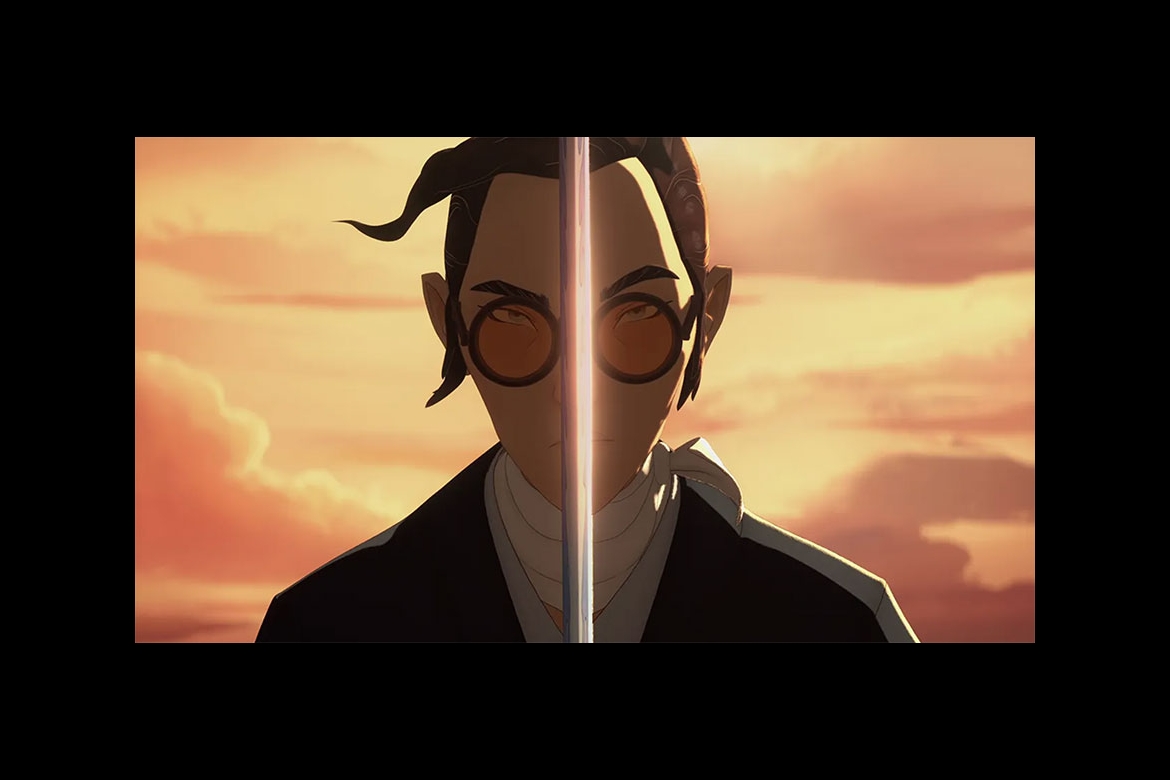Blue Eye Samurai Creators Reveal How Their Daughter Inspired Netflix's New Anime Series
Husband and wife duo Michael Green and Amber Noizumi use swords and family to tell a revenge-filled epic set in feudal Japan.
Blue Eye Samurai, now streaming on Netflix, might be the first official collaboration between married couple Michael Green (Starz's American Gods, Blade Runner 2049) and Amber Noizumi, but it's directly influenced by their greatest collaboration: their daughter, born in 2008. The show's title comes from the nickname they gave her at birth, and the story comes from contemplating how she might be received at different periods in history, especially in Japan.
"If she had been a samurai, the borders would have been closed and they would not have foreigners," Noizumi says. "Nobody would have blue eyes and that would be monstrous."
Set in 17th-century Japan, Blue Eye Samurai tells the story of Mizu, a mixed-race swordmaster who disguises herself as a man in order to exact revenge. While the idea took shape fifteen years ago, it wasn't until Green and Noizumi began to explore animation as an avenue that it began to cohere. "We were early adopters of the credo that animation is just a medium, it's a tool," Green explains.
At the time, there were few shows on television that embraced the label of "adult animation," though now Samurai joins a cadre of shows such as Amazon Prime's Invincible and AMC's Pantheon. When the pair decided that animation was the route they wanted to take, they began to seek out a company that would share their vision for the show, which was quite simple: they wanted it to be beautiful.
To that end, the duo designed moodboards filled with Japanese woodblock paintings to assert a bespoke, handcrafted look that animators could bring to life. To bring an extra level of thoughtfulness to the characters' wardrobes, they drafted costume designer Suttirat Larlarb, who worked with Green on the Starz series American Gods.
"We wanted our main characters to be given the movie star treatment," he says. Larlarb's work, he explains, was differentiating how people in different classes would dress, or what might separate fashion in Edo from clothes in Kyoto. To achieve that level of authenticity, Green and Noizumi concocted a syllabus on Edo-period Japan, with each book's bibliography leading them down new paths. "That was the better part of our quarantine," Green says, "giving ourselves a postgraduate degree."
Aside from scholarly research, Noizumi drew upon personal experience around the intricacies of race in Japan. Her father, who was born in Japan, told her that, though she is Japanese, she would look white to natives, a reality she realized upon traveling there. "We're Japanese in America," Noizumi says of visiting her father's home country. "But we're white here."
While Noizumi admits she was nervous to work with her spouse, she knows it was the best course for this story. "The fact that our child was a collaboration," she says, "it was so personal to both of us, it really stuck."
They wrote the show during the early days of Covid; it became a North Star for them. While some couples spent their time arguing over dishes, they quarreled over plot.
As they fleshed out their main character, they agreed that a quest for revenge would be her fuel, driving the action of the story. "We knew she was going to be singularly focused," Noizumi says. Her traits reflected that: she would be a fast eater, using food as fuel; she would downplay emotions to keep her eye on vengeance. "Everything else was going to be in service of that trait."
Part of the joy of watching Samurai is that it wears its influences on its sleeve, some in the form of Easter eggs. A dojo and its leader, Heiji Shindo, are a nod to Japanese director Kaneto Shindo, while genre classics such as Lady Snowblood are directly referenced. In the first episode, a needle drop of "Battle Without Honor or Humanity"echoes Kill Bill, with which Samurai shares a sound mixer, Myron Nittenga.
But not all of the series' influences come from one specific genre; Noizumi and Green say that one of the show's greatest influences is the Barbra Streisand film Yentl which, like Samurai, features a woman who must infiltrate a male-dominated society in disguise and who ends up in a love triangle.
The couple's love for process is reflected in one of the show's central metaphors — sword making. Crafting the perfect weapon involves beating out impurities, which teaches Mizu that mixed metal makes the strongest sword. Fittingly, the metaphor applied not only to the project's main character, but to the process of animation which, like baking, making cheese or crafting a sword, requires patience, passion and collaboration.
As Green puts it, "The artists on the show all treat every little decision as a piece of the process to steep in, with the diligence of a tea ceremony."
Blue Eye Samurai is now streaming on Netflix.








